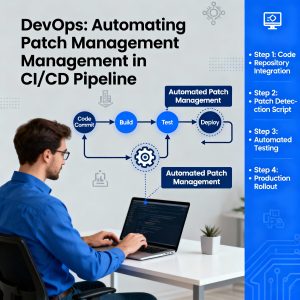The integration of Artificial Intelligence (AI) into business operations has become a cornerstone for innovation and efficiency. AI APIs play a crucial role in this integration, enabling organizations to access AI capabilities efficiently and scale their operations. However, managing AI APIs presents unique challenges compared to traditional APIs, requiring specialized strategies to ensure secure, efficient, and scalable consumption. This article explores the best practices for AI API management, focusing on ingress and egress gateways, security measures, and optimization techniques.
Challenges in AI API Management
AI APIs differ significantly from conventional APIs due to their high computational requirements, dynamic access controls, and the need for contextual input filtering. Large Language Models (LLMs) introduce additional complexities such as prompt engineering, response validation, and ethical constraints. To address these challenges, organizations must implement tailored API management strategies that include model-specific rate limiting, dynamic request transformations, prompt handling, content moderation, and seamless multi-model routing.
GenAI Usage and API Integration
Organizations typically consume Generative AI (GenAI) services through cloud-hosted AI APIs or internally hosted models. Cloud-hosted services, such as those from OpenAI, AWS Bedrock, Google Vertex AI, and Microsoft Azure OpenAI Service, offer pre-trained and fine-tunable models accessible via APIs. In contrast, hosting AI models on-premises or in private cloud environments is often preferred for reasons of data privacy, latency, cost optimization, and compliance. Open-source models like Llama, Falcon, and Mistral are commonly used in these setups.
Critical Considerations for AI API Management
Whether consuming AI externally or hosting it internally, several factors are crucial:
- Security: Prevent unauthorized access and ensure compliance with regulatory frameworks.
- Rate Limiting: Manage API consumption to control costs and prevent excessive usage.
- Context Filtering and Content Governance: Ensure AI responses align with ethical standards, brand policies, and regulatory requirements.
To enforce these controls, AI services should be consumed via gateways that provide structured governance, security enforcement, and seamless integration across environments.
Ingress and Egress Gateways for AI APIs
Gateways play a pivotal role in managing AI API access and consumption. There are two primary types:
Ingress API Gateway
An ingress gateway controls how external consumers access an organization’s AI APIs. It enforces security policies, authentication, authorization, rate limiting, and monetization, ensuring controlled API exposure. This gateway is essential for exposing internal AI services to external users securely.
Egress API Gateway
An egress gateway manages how internal applications consume external or cloud-based AI services. It enforces governance, security policies, analytics, and cost control mechanisms to optimize AI API consumption. This gateway helps organizations maintain efficient and secure interactions with external AI providers.
Best Practices for AI API Management
Implementing best practices is crucial for both ingress and egress AI API management:
Shared Best Practices
- Secure Access and Authentication: Use OAuth, API keys, JWT, or role-based access control (RBAC) to regulate API access and restrict sensitive AI functionalities.
- AI Guardrails: Implement content moderation, bias detection, response validation, and ethical safeguards to prevent AI misuse.
- Monitoring and Analysis: Track usage patterns, response times, and failure rates to maintain service reliability and detect anomalies.
- Privacy and Compliance: Apply encryption, data anonymization, and compliance frameworks (GDPR, HIPAA, AI ethics) to meet regulatory requirements.
- Token-Based Rate Limiting: Regulate API usage to prevent excessive costs, ensure fair resource allocation, and mitigate abuse.
Best Practices for Ingress AI API Management
When exposing internal AI-powered services to external users, ingress AI API management ensures structured, secure, and controlled access. Key practices include:
- Self-Service Developer Portal: Provide documentation, governance controls, and subscription mechanisms for third-party developers.
- API Consumption and Performance Monitoring: Ensure optimal service reliability by tracking request patterns and detecting anomalies.
Best Practices for Egress AI API Management
Egress AI API management ensures structured, secure, and optimized consumption of third-party AI services. Best practices include:
- Optimize Model Selection: Dynamically route requests to AI models based on cost, latency, or regulatory constraints.
- Leverage Semantic Caching: Reduce redundant API calls by caching AI responses for similar queries.
- Enrich AI Requests with Context: Inject metadata for traceability, personalization, and enhanced response accuracy.
Beyond Gateways: Comprehensive AI API Management
Effective AI API management extends beyond gateways to encompass lifecycle management, monitoring, and policy enforcement. Key features include:
- API Marketplaces: For discovery and monetization of AI services.
- Developer Tools: Such as API testing sandboxes and SDK generators.
- Observability Features: For tracking usage and debugging.
- Model Routing: To optimize cost and performance.
- Prompts Management: To standardize AI interactions.
- Compliance Tools: For enforcing governance policies.
Organizations should be able to manage internal and external AI services across hybrid and multi-cloud environments, ensuring flexibility and scalability.
Aligning with Cloud-Native Principles
AI API management should align with cloud-native principles to support elastic scaling, security, observability, and cost efficiency. Kubernetes enables dynamic scaling, while monitoring tools like Datadog and OpenTelemetry enhance visibility. Serverless AI inference helps optimize costs, and leveraging Kubernetes-native API gateways aids in building a scalable, secure, and cost-effective AI API ecosystem.
Conclusion
Managing AI APIs effectively is crucial for unlocking real business value without incurring spiraling costs or security risks. By adopting a structured AI API management strategy that includes ingress and egress gateways, organizations can ensure secure, efficient, and scalable AI consumption. Whether deploying AI APIs internally or consuming them externally, a well-governed API ecosystem ensures sustainable AI adoption and aligns with the evolving needs of businesses in the digital age.
Read more such articles from our Newsletter here.



